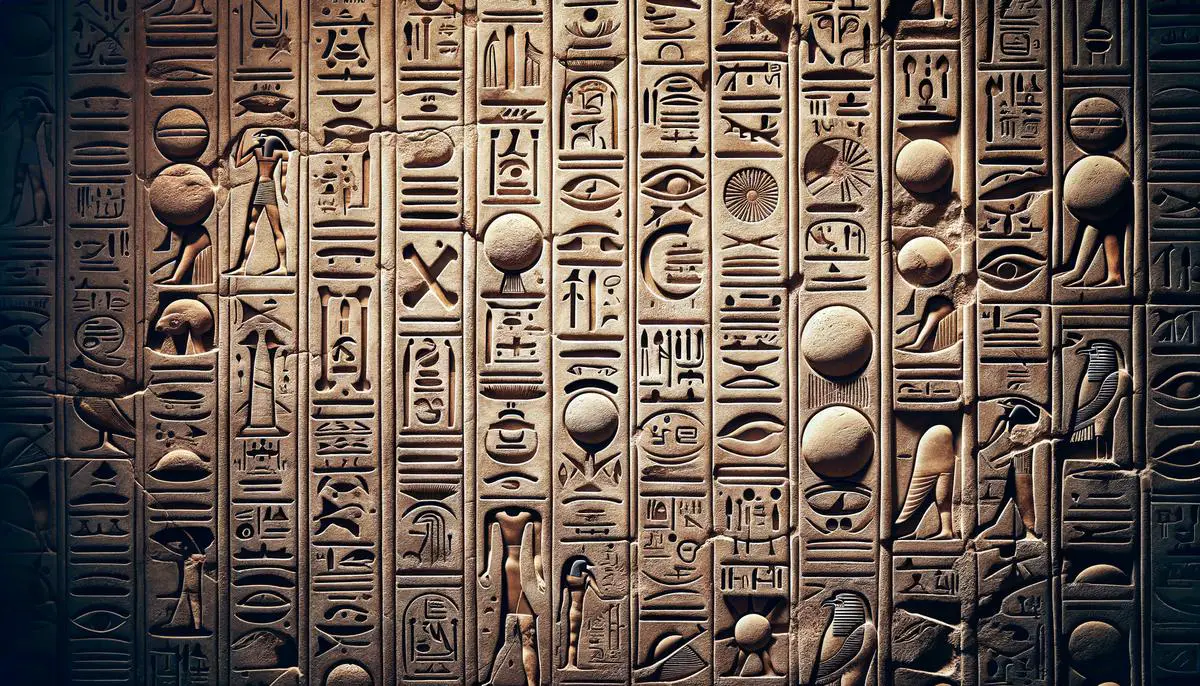Sirius, often known to us as the Dog Star, plays a significant role in the tapestry of the night sky and in the hearts and minds of ancient civilizations around the world. This article explores the diverse interpretations and significance of Sirius across various cultures, its impact on astrology and modern spirituality, and its scientific discoveries. Through the exploration of ancient beliefs, astrological perspectives, and the insights provided by modern science, we will uncover the multifaceted importance of Sirius throughout history and its continuing influence today.
Historical Beliefs and Practices
Sirius, often known as the Dog Star, holds a special place in the night sky and in the hearts of many ancient civilizations. It’s not just another twinkling light among the millions. Sirius has been a beacon of significance, guiding the beliefs, calendars, and even agricultural practices of ancient peoples. Let’s embark on a journey back in time to explore how different civilizations interpreted the significance of Sirius.
The Ancient Egyptians had a profound connection with Sirius. They recognized it as the herald of the Nile’s inundation, which was a critical event for their agriculture. As the brightest star in the sky, its heliacal rising – the first night it becomes visible just before dawn after moving out of the sun’s glare – coincided with the annual flooding of the Nile. This event brought fertile soil to the banks of the Nile, allowing Egyptians to grow their crops. Thus, Sirius was deeply woven into the fabric of Egyptian life, embodied in their goddess Isis. The star’s appearance was a signal for joy and festivity, marking the beginning of the Egyptian New Year.
Moving to the West African Dogon tribe in Mali, we find another fascinating perspective on Sirius. The Dogon possessed astonishing astronomical knowledge about Sirius, which they believed was orbited by a tiny, dense companion star, invisible to the naked eye. They regarded Sirius as a central point in their cosmology and held ceremonial dances to honor its significance. What’s intriguing is that this companion star, Sirius B, was not discovered by modern astronomers until the 20th century, leaving many to wonder how the Dogon could have known about it.
In ancient Greece, Sirius was associated with the scorching heat of summer. Greeks observed that its rising coincided with the hottest days of the year, a period they referred to as the “dog days,” linking the star to the constellation Canis Major, the Great Dog. They believed Sirius contributed to the summer heat by adding its heat to that of the sun. This period was feared and thought to bring fever and disaster. Despite this, Sirius was also admired for its brilliance and was a key navigational star for sailors navigating the Mediterranean Sea.
The ancient Polynesians used Sirius, among other stars, for navigation across the vast Pacific Ocean. It was part of their star path called “Te Lapa,” which means the light. By carefully observing the stars, they could determine their position and direction at sea, allowing them to embark on long voyages between the islands. Sirius was a critical part of their celestial navigation toolkit.
Across these civilizations, Sirius transcended its role as just another star in the sky. It was an integral part of life, deeply embedded in the mythology, agriculture, and navigation practices of ancient peoples. Its appearance was eagerly anticipated, celebrated, or feared, underlining the star’s profound impact on human history. By looking at Sirius through the lens of these ancient interpretations, we gain insight into the rich tapestry of human culture and our eternal quest to understand the universe.
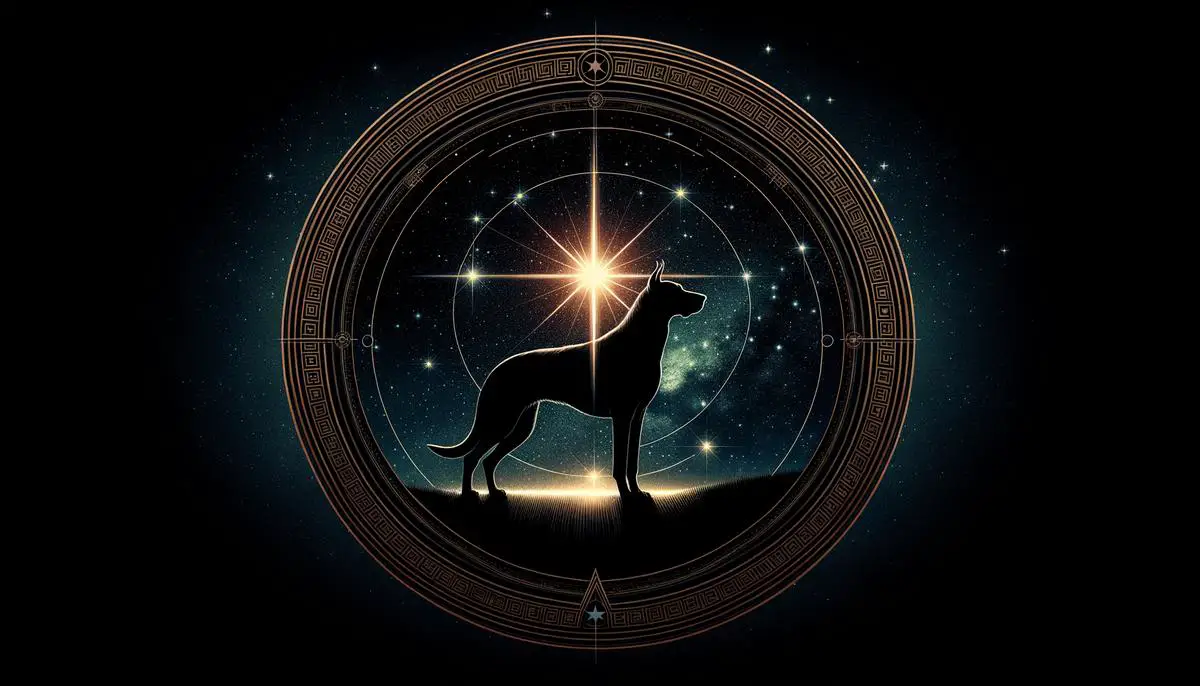
Astrological Perspectives on Sirius
In the modern realm of astrology, Sirius continues to be a star of significant influence, echoing its revered status from ancient times. Venturing into contemporary astrology’s corridors, Sirius sheds its archaic roles to adopt new significances, intertwining with the current astrological practices and beliefs. This celestial body, often termed as the “Brightest Star,” serves as more than a mere point of light in the sky; it holds profound symbolic meanings and exerts notable influences within astrological frameworks.
Today, Sirius is often interpreted as a harbinger of wealth, honor, and fame, mirroring its luminosity and prominence in the sky. Astrologers regard it as a source of aspirational qualities, attributing to it the power to elevate and illuminate the paths of individuals toward success. Its placement in one’s natal chart is scrutinized with keen interest, for its position might suggest the areas of life where an individual might shine the brightest or encounter significant opportunities for growth and achievement.
Moreover, Sirius’ energies are considered transformative. In modern astrology, it is believed that the influence of Sirius can catalyze profound spiritual awakenings or significant life changes. This aligns with its historical connotations of rebirth and renewal, as observed in ancient Egypt. Individuals seeking deeper meaning or undergoing personal transitions might find the energies of Sirius particularly resonant, serving as a cosmic guidepost towards self-discovery and evolution.
In addition to its personal implications, Sirius is also viewed through a collective lens. Astrologers often reflect on the star’s positioning and movements as indicators of societal shifts or global events. Given its historical association with pivotal changes and its astronomic visibility, it’s no surprise that Sirius maintains a role in predicting overarching trends or shifts within the collective consciousness.
Sirius’ influence extends to the realm of creativity and artistic expression as well. It is commonly associated with the muses, inspiring innovation and artistic brilliance. Creatives who feel a particular kinship with Sirius might discover enhanced inspiration or a deepened connection to their intuitive and imaginative faculties under its glow.
Despite its modern adaptations and interpretations, Sirius’ significance is a testament to its enduring legacy throughout human history. As we chart our courses through the vastness of astrological knowledge, Sirius remains a beacon, illuminating the interconnectedness of the cosmos and humanity. Its role in modern astrology serves not only as a bridge to our past but as a guiding light toward understanding the myriad ways the celestial realm influences our lives.
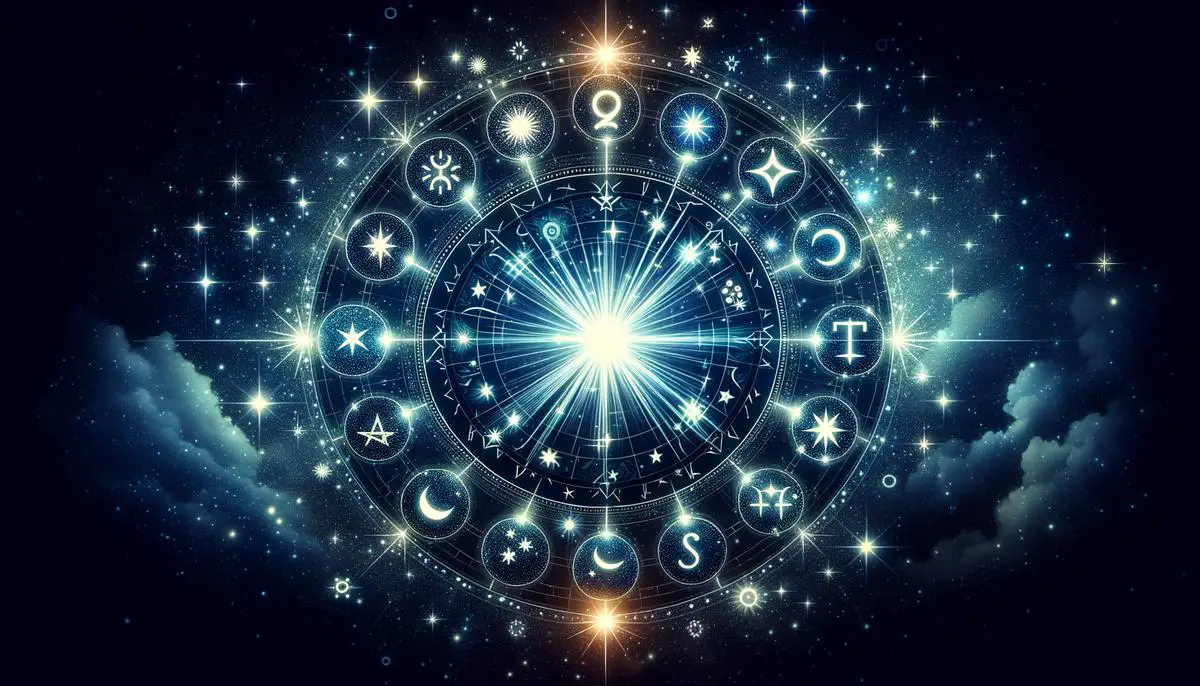
Sirius in Modern Spirituality
Diving deeper into the cosmic significance of Sirius, we find a star that has maintained its allure well into the age of modern astrology. Often dubbed the “Brightest Star,” Sirius holds a place of reverence not only for its luminance but also for the deep symbolism embedded within its twinkling light.
In contemporary astrology, Sirius is no longer just an astronomical marvel; it has evolved into a symbol carrying profound meanings. Its brilliant white-blue glow is thought to embody wealth, honor, and fame, illuminating paths to success for those under its influence. Astrologers believe that Sirius’ energies can bring about abundance and prestigious recognition in one’s professional life, acting as a celestial benefactor.
Yet, Sirius’ influence extends beyond material prosperity. The star is associated with transformative energies that catalyze spiritual awakenings and significant life changes. Its appearance in astrological charts is often seen as a harbinger of profound internal growth, guiding individuals through periods of intense personal development. This transformative aspect positions Sirius as a pivotal guidepost for self-discovery, helping seekers unearth hidden talents and navigate their life’s purpose with greater clarity.
Moreover, Sirius plays a critical role in the collective consciousness. Its positioning and movements are closely watched by astrologers for indications of societal shifts and global events. The belief here is that Sirius, with its potent energies, can influence the collective narrative, guiding humanity through transitions and cultural metamorphoses. This makes Sirius not just a personal beacon but a global one, signifying key moments in human history that herald collective changes.
The star’s influence on creativity and artistic expression cannot be understated either. Historically celebrated as a muse, Sirius is believed to inspire innovation and originality, unlocking the creative potential within. Artists, musicians, and writers especially may find themselves drawn to the cosmic allure of Sirius, tapping into its vibrant energies to fuel their artistic endeavors.
The enduring legacy of Sirius throughout human history is a testament to its continued significance in astrology. It underscores an innate human fascination with the cosmos, serving as a constant reminder of the interconnectedness between celestial bodies and our own lives. By understanding the role of Sirius and its influence on personal and collective realms, we gain deeper insights into the celestial forces shaping our existence.
Navigating life’s complexities with Sirius as a guide offers a unique perspective on the cosmic interplay between the stars and human destinies. It embodies the enduring human quest to understand our place in the universe, encouraging us to look up and acknowledge the cosmic tapestry that influences our journeys. As we delve into the mysteries of Sirius and its role in contemporary spiritual practices, we continue to weave the celestial narratives that have fascinated civilizations throughout the ages, connecting us all through the timeless dance of the cosmos.
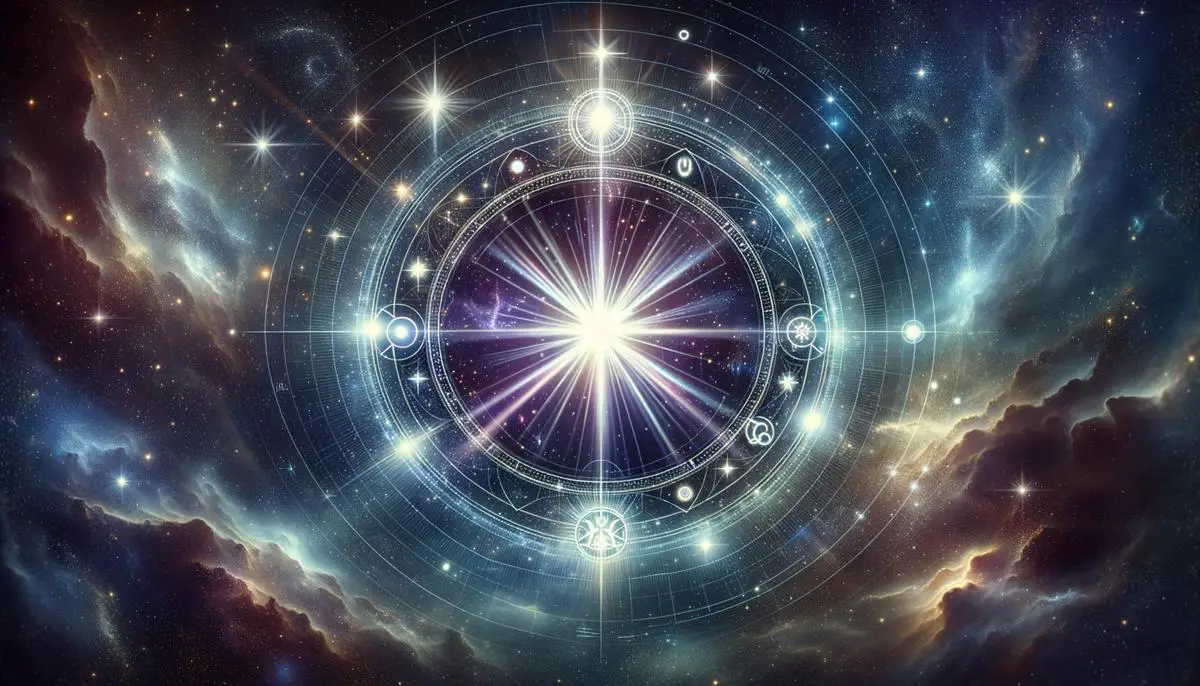
Scientific Insights into Sirius
Turning our gaze from the storied past of Sirius, deeply entrenched in mythology and ancient cultures, we venture into the illuminating realm of modern science, where this luminary star continues to captivate and intrigue. Through the lens of today’s astronomical advancements, Sirius emerges not simply as a singular beacon in the night sky but unfolds a fascinating narrative of cosmic wonder, offering insights into the dynamics of stellar systems and further enriching our understanding of the universe.
Sirius, known colloquially as the Dog Star, holds the title of the brightest star in our night sky, a fact attributable not solely to its intrinsic luminosity but also its relative proximity to Earth. Located a mere 8.6 light-years away in the constellation Canis Major, this celestial gem shines with a brilliance approximately 25 times that of the Sun. However, the true allure of Sirius lies in its dual nature, for it is not one, but two stars locked in a cosmic dance – Sirius A, a dazzling white star, and its lesser-known companion, Sirius B, a faint white dwarf.
The discovery of Sirius B, often referred to as the Pup, marked a pivotal moment in the annals of astronomy. The existence of Sirius B was first inferred by the astronomer Friedrich Bessel in the 19th century, who noticed perturbations in the motion of Sirius A that suggested the gravitational influence of an unseen companion. It wasn’t until the telescope technology caught up that Sirius B was visually confirmed, revealing the star’s intriguing evolution from a massive star to a white dwarf, thus offering a rare observational testament to the life cycles of stars.
The Sirius star system serves as an exemplary case study in stellar dynamics and evolution. Sirius A, classified as an A1V type star, stands out not only for its brilliance but for its surface temperature of about 9,940°C (about 18,000°F), which imparts it with a distinctive bluish-white hue. In contrast, Sirius B, which exhausted its nuclear fuel eons ago, has since collapsed into a white dwarf. Despite its cooler temperature, Sirius B retains a significant gravitational pull, a testament to its former glory as a star once more massive than Sirius A.
The relative movement of Sirius A and Sirius B around their common center of gravity is a spectacle that underscores the intricacies of binary star systems. Observations and measurements of their orbits have provided invaluable data, contributing to the broader understanding of stellar mass, gravity, and the gravitational interaction between celestial bodies.
Moreover, the significance of Sirius extends beyond its binary nature and its distinction as the brightest star. The study of Sirius has facilitated advancements in astrophysics, including insights into the interstellar medium and the influence of stellar wind. The light from Sirius, as it journeys across space, encounters particles and magnetic fields, allowing scientists to study the properties and dynamics of the interstellar medium through which it passes.
In contemporary society, Sirius maintains its allure, not only as a celestial marker that has guided sailors and intrigued ancient cultures but also as a subject of scientific inquiry that continues to unveil the mysteries of the cosmos. Its visibility from nearly every inhabited region of Earth has made Sirius a universal symbol in the collective imagination, bridging the gap between the ancient and the modern, between myth and science.
Through the lens of modern science, Sirius is more than just a luminary beacon; it is a gateway to understanding the universe’s complexities. From its dual nature as a binary star system to its role in unraveling the mysteries of stellar evolution and the interstellar medium, Sirius stands as a testament to human curiosity and our enduring quest to comprehend the cosmos. As we continue to gaze up at the night sky, Sirius remains, as ever, a source of inspiration and wonder, illuminating our path to greater cosmic discoveries.
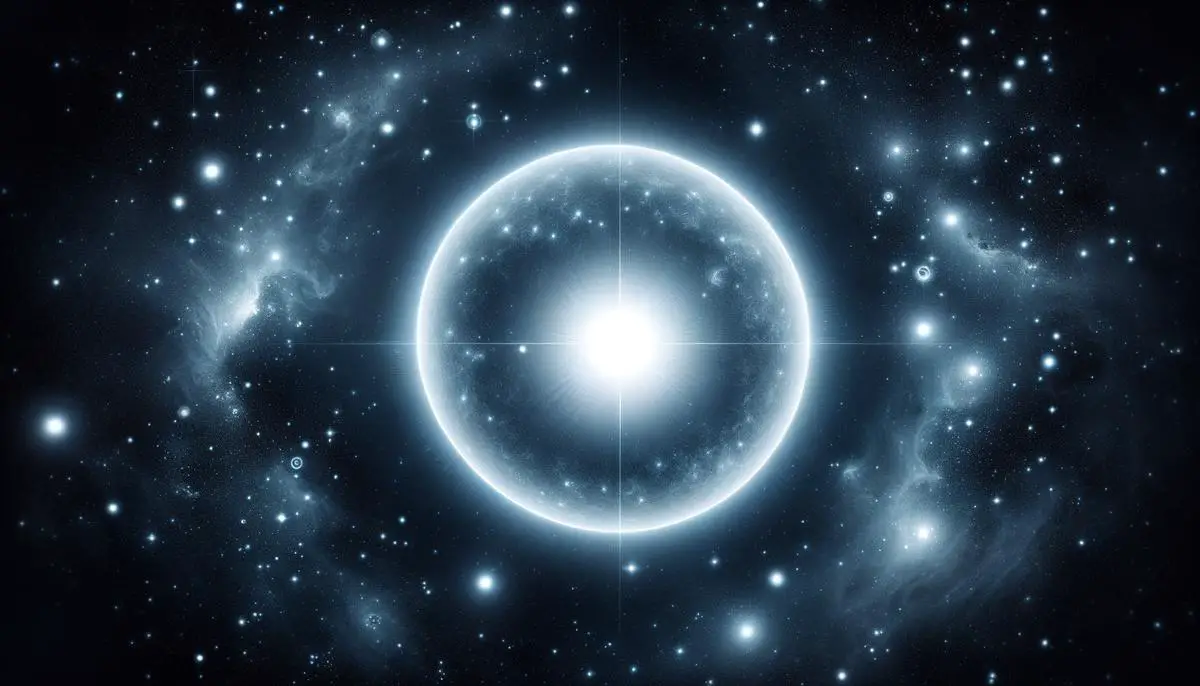
Celebrations and Rituals
Delving deeper into the subject of Sirius, beyond its historical and scientific significance, we find a rich tapestry of rituals and celebrations that continue to honor this brilliant celestial body in contemporary times. While ancient connections laid the groundwork for reverence, today’s interpretations and observances of Sirius blend traditional understandings with modern spiritual and astrological practices.
Contemporary Rituals and Celebrations:
Across the globe, individuals and groups who draw inspiration from the cosmos often incorporate Sirius into their spiritual and ritualistic practices. The star’s prominence in the night sky and its historical significance make it a focal point for contemporary ceremonies that are as varied as the cultures and belief systems that celebrate it.
- Astrological Observances: In modern astrology, Sirius retains a revered position. Astrologers and enthusiasts alike may mark the heliacal rising of Sirius—its reappearance in the dawn sky after a period of invisibility—with special readings and predictions. This event, typically occurring in late July or early August depending on the geographical location, is seen as a time of renewal and significant energetic shift. Observers might meditate, set intentions for the coming year, or conduct readings to understand the influences Sirius exerts during this time.
- Spiritual Gatherings: Given Sirius’ association with spiritual awakening and transformation, it’s common for spiritual communities to gather for group meditations, workshops, or discussions focused on the star. These events often aim to harness the perceived energies of Sirius to facilitate personal growth, healing, and enlightenment. Activities might include guided meditations that visualize a connection with the celestial body, or discussions on how to integrate its transformative energies into daily life.
- Artistic Engagements: Recognizing Sirius’ influence on creativity and artistic expression, some contemporary celebrations involve the creation of art, music, and literature inspired by the star. Exhibitions, performances, and readings might be organized to honor the creativity spurred by Sirius, with artists sharing how the star’s energy influences their creative process.
- Online Communities and Events: In the digital age, the observance of Sirius and its significance has found a new platform—online. Virtual ceremonies, webinars, and social media events bring together people from various parts of the world to celebrate Sirius. These online gatherings allow for the sharing of insights, astrological forecasts, and meditative practices focused on the star, making its observances more accessible to a global audience.
- Environmental and Philanthropic Actions: Recognizing the interconnectivity of all things, some contemporary rituals involve actions aimed at healing the Earth or supporting humanitarian causes. Participants might engage in tree planting, cleanup drives, or charity events as a way of honoring the nurturing and benevolent aspects attributed to Sirius. Such activities underscore the belief in Sirius as a guide towards not only personal but also collective wellbeing.
- Personal Rites of Passage: For individuals who feel a strong personal connection to Sirius, the star may play a central role in marking significant life transitions or milestones. Personal rituals, crafted to reflect the individual’s relationship with Sirius, might include spending a night under the stars in contemplation, creating a personal altar with symbols associated with Sirius, or undertaking a pilgrimage to a place with a clear view of the star during a key annual event.
These contemporary rituals and celebrations illustrate the enduring allure and significance of Sirius in the collective imagination. As humanity progresses and evolves, the ways in which we honor and connect with Sirius also reflect our growing understanding of the cosmos and our place within it. Through these observances, Sirius continues to be a beacon of inspiration, guiding us toward deeper connections with the universe and ourselves.

As we have explored the historical, spiritual, and scientific facets of Sirius, it becomes evident that this star transcends its status as a mere celestial body. Sirius has been a symbol of guidance, prosperity, transformation, and knowledge for countless generations across different cultures. Its legacy is a vivid reminder of humanity’s enduring fascination with the cosmos and our relentless pursuit of understanding our place within it. Sirius, with its bright luminescence and significant cultural impact, continues to inspire, guide, and enlighten us, illuminating our paths toward a deeper connection with the universe and each other.
![]()
